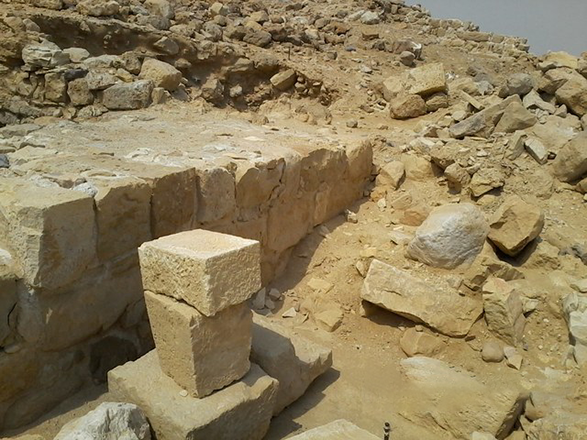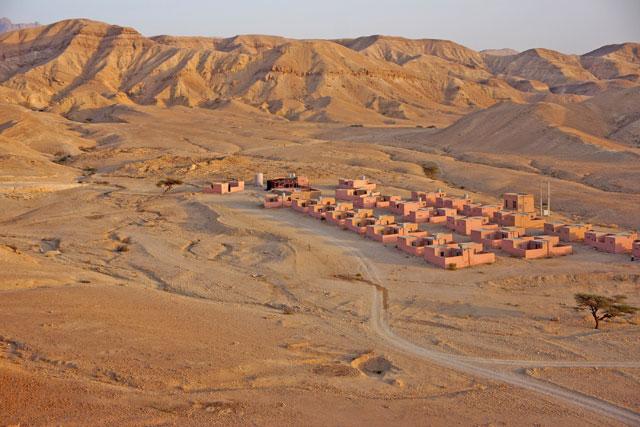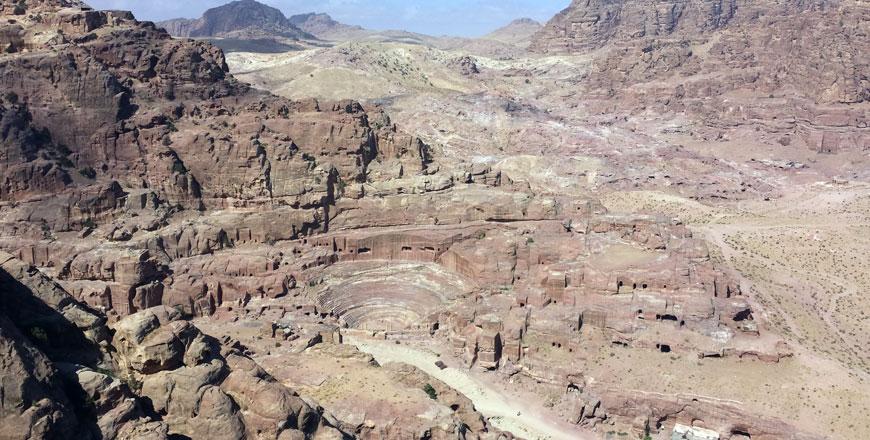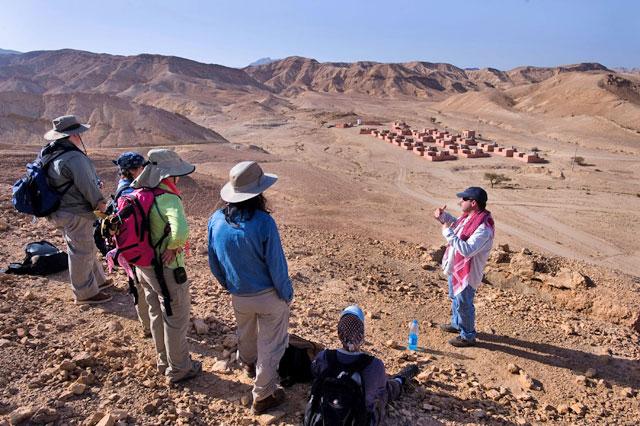You are here
Bir Madhkur: Unveiling Petra’s economic hub through archeological exploration
By Saeb Rawashdeh - Dec 26,2023 - Last updated at Dec 27,2023

Remains of rooms at Khirbat Bir Madhkur (Photo courtesy of ACOR)
AMMAN — The site of Bir Madhkur is located in the Petra hinterland some 12 km northwest of Petra, near Wadi Araba. The site became a focus of a research because of its economic role during the Nabataean Kingdom. Consequently, different archaeologists and historians studied the local economy of Bir Madhkur. The site was occupied from 4th century BC until early Islamic Period in 7th century AD.
“Main features of the site include a Roman/Byzantine fort which may overlay an earlier 1stcentury BC Nabataean structure, a bath complex and caravanserai, a civilian settlement west of the fort, cemeteries and numerous other structures in outlying areas,” noted Professor Jeniffer Ramsay from SUNY Brockport University.
According to Ramsay, most archaeological exploration centered on the urban, monumental core of Petra itself or its immediate suburbs.
The excavations to date have focused on the ancient settlement of Bir Madhkur itself, in addition to a caravan station (Khirbet Esfaysif), which is approximately 4.8 km south-southwest of Bir Madhkur, and a farmhouse of Bir Madhkur, Ramsay continued adding that their excavation strategy has been to determine the nature of human occupation at Bir Madhkur between the Hellenistic and Byzantine periods in the context of regional patterns of economic activity particularly in relation to agriculture and trade.
“We also seek to test the hypothesis that Bir Madhkur, during the Roman military buildup in the fourth century, became an administrative and commercial hub of some significance, rather than merely a military station in the hinterland of Petra. Coupled with the survey data, the results of our excavations allow us to map more precisely the nature and extent of regional economic activity between classical and late antiquity,” Ramsay underlined.
The research team found the evidence of economic activities in the shape of field walls, terraces, water channels and many other associated features.
It now appears that the Roman military presence in the fourth century AD, following an empire-wide economic collapse, played a significant role in facilitating the expansion of agricultural production throughout the region.
Despite the arid nature of the Wadi Araba, settlement and agricultural activity was more extensive in the past.
“The studies from Faynan have demonstrated that settlement and industrial activity began in ca. 5000 BC during the Chalcolithic period and increased until it peaked in the Roman and Byzantine periods noted that post-Neolithic human occupation of the area around Wadi Faynan had already created some small-scale wall catchments and large field systems,” Ramsay said, adding that the studies at Faynan also document a long period of floodwater farming, which indicates that by the Bronze Age farmers were building simple check dams and by the Iron Age and through to the Nabataean period, farmers were using diversion extensively.
In the Late Roman/Byzantine period field systems were considerably enlarged and long channels were constructed to tap and divert water for agricultural purposes, Ramsay explained, adding that there has been a substantial amount of work related to agriculture that has been carried out on the western border of the Wadi Araba in the Negev Desert highlands.
“Hundreds of farms and agricultural installations were spread throughout the region and were found in association with Byzantine towns,” she said.
The Late Roman/Byzantine farmers, already experienced in adaptation to the desert climate and landscape, actually created different types of agricultural systems, Ramsay underscored.
Related Articles
AMMAN — Located in Wadi Araba, 12 kilometres northwest of Petra, Bir Madhkur was a Roman fort and a settlement on the well-known Incense Rou
AMMAN — A population boom that took place during a period of Nabataean, Roman and Byzantine rule must have been caused by multiple factors i
AMMAN — Urbanisation and the formation of Arab communities during the late Roman and the Byzantine times is “a complex question” that would

















